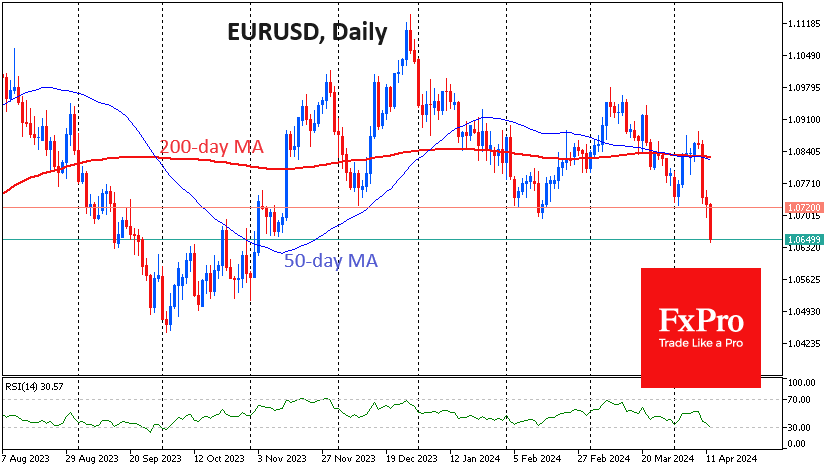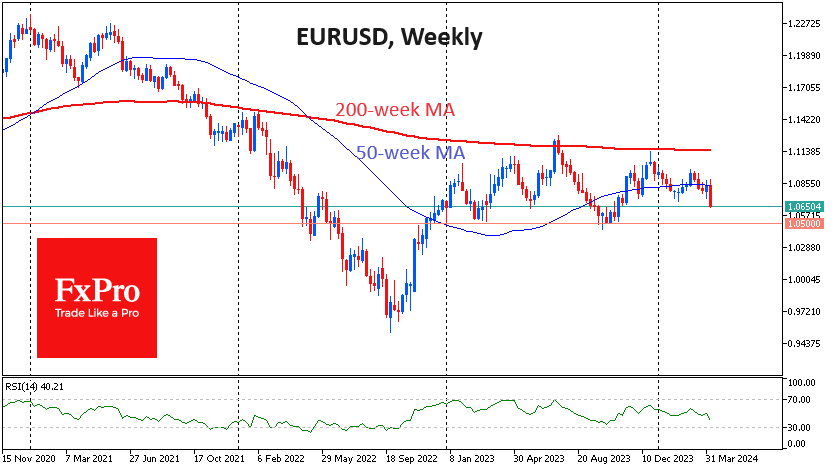EURUSD Has Bucked the Trend, Threatening to Fall Below Parity
EURUSD is losing 1.9% from Wednesday's peak to a five-month low at 1.0650. US inflation data and ECB comments highlight the divergence of Fed and ECB monetary policy.

Wednesday's US inflation report appears to have set the trend for the dollar, taking it out of a more than four-month wander around its 200-day moving average. And the biggest contributor to this pullback is the EURUSD dynamics.
The pressure on the key currency market pair comes from several directions at once. On the US side, markets have continued to receive pro-inflationary data since the beginning of the month: acceleration in manufacturing activity, strong new job growth, and stronger CPI acceleration than expected. This data continued to push back the date of the expected Fed’s rate cut and the number of these moves.
On the European side, by contrast, data releases and comments from ECB officials are supporting the sentiment for the first cut in June. And this is a divergence that markets can no longer ignore.

The EURUSD dynamics during this week emphasise the serious bearish bias in the pair. The pair crossed the 50- and 200-day moving averages in a sharp move on Wednesday and closed well below them. Neither on Thursday nor on Friday did the Euro make any noticeable attempts to rebound.
Moreover, we don't even see the typical Friday thrust of short-term profit-taking with an ongoing sell-off. EURUSD slid to 1.0650, having fallen out of its trading range since late December.
EURUSD has been receiving support on dips towards 1.05 in 2023, spending only a few days below that level. The pair will likely test the strength of this support again very soon, and the accumulating difference in Fed and ECB policy reinforces the chances that the pair will not stop there this time.
If indeed EURUSD falls below 1.05 in April, the pair could fall to the next leg, finding support only near 0.95.
By the FxPro Analyst Team
-782024624.png)
-782024624.png)



















